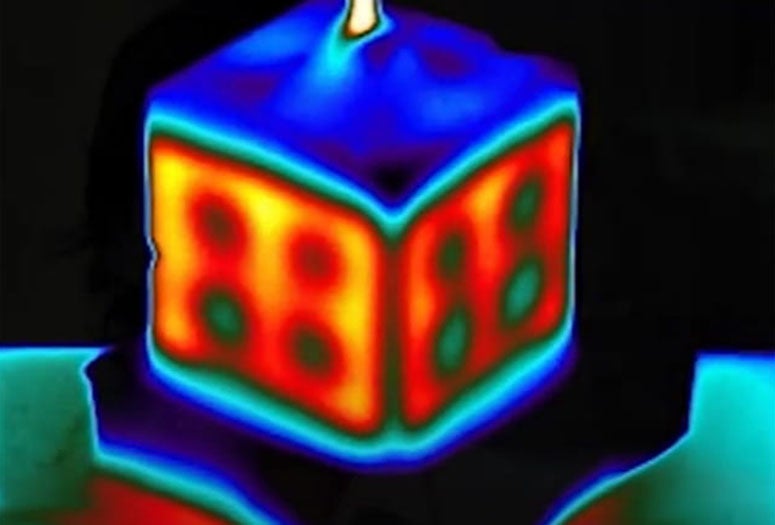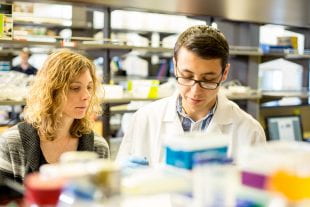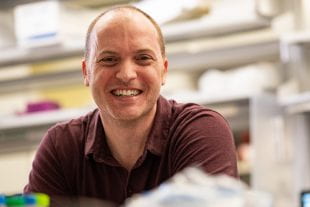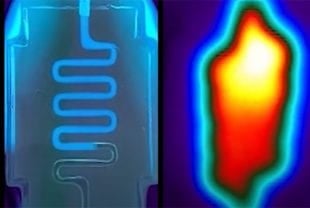By Leila Gray
Special to the Rice News
Bioengineers at Rice and the University of Washington (UW) are devising a hot new technology to remotely control the positioning and timing of cell functions to build 3D artificial, living tissues.
The labs of Kelly Stevens at the UW School of Medicine's Institute of Stem Cell and Regenerative Medicine in Seattle and Jordan Miller in Rice's Brown School of Engineering are collaborating to develop bioprinted tissues that simulate some of the many, complex functions of organs like the liver. If successful, such artificial tissues could be used to study, for example, how drugs or toxins act on the liver.
In a study published online today in Science Advances, Stevens, Miller and colleagues describe their latest 3D-printed creation: radiatorlike "thermofluidic" systems that generate patterns imitating the genetic profiles found in human livers.
The 3D-printed fluid systems are like miniature versions of steam-heat radiators in older homes, supplying heat that allows the researchers to manipulate the genetic wiring of cells deep inside artificial tissues. The researchers call the technology Heat Exchangers for Actuation of Transcription, or HEAT.
"What I love about HEAT is that it's an independent way to control gene expression compared to the other tools generally available for mammalian gene activation, such as those that rely on chemicals or light," said Miller, an assistant professor of bioengineering at Rice. "The elegance of HEAT is that we used mass transfer with flow to deliver the heat transfer, and this works so well because both phenomena follow similar physical transfer laws."
Liver damage can result from infections, medications, poisons and intoxicants like alcohol. Liver disease affects more than 500 million people worldwide and accounts for more than 2 million deaths each year. Eventually, researchers would like to be able engineer artificial tissues that could be surgically implanted to take over lost functions of diseased livers.
Stevens, an assistant professor of pathology and bioengineering at UW Medicine and the UW College of Engineering, said the intricacies of the liver pose hurdles for artificial organ bioengineers. For example, how does one prompt cells to assume different functional roles and spatial positions as the organ takes shape?
Just as employees in a factory have different responsibilities and work locations, so do groupings of cells within the liver, she said. Liver cells get their job assignments from key genes that, through their protein expression profiles, guide them to their assigned spots to carry out their duties.
How genes respond to cues that shape a cell's destiny and how this information transfer occurs are becoming better understood. However, getting cells to perform this information transfer on demand has been elusive, especially for complexly organized systems.
"The liver performs hundreds of critical functions," the researchers noted in their project summary. To do so, there is a division of labor among liver cells.
"Rebuilding liver remains an enormous challenge," the scientists wrote. The field is not yet able to create small features, such as the distinct metabolic zones found in natural livers. The researchers also noted that, to build a liver, their field must better understand how the organ is assembled and its physiology regulated by gene expression in cells.
HEAT, which was developed by Stevens and UW bioengineering graduate student Daniel Corbett, uses thermal patterns to trigger gene expression. In the study, they showed that the transfer of warmth from printed networks within tissues activated heat-inducible transgenes in embedded cells.
These manipulations could reveal how genetic patterning inside different cells drives the segregation of tissues and various liver functions. This knowledge could, in the future, not only suggest ideas for sculpting new, working organs from stem cells, but also for remotely managing implanted organ tissues to achieve a desired therapeutic response, the researchers said.
This research was funded by a National Institutes of Health National Heart, Lung and Blood Institute grant (DP2HL137188), an NIH National Institute of Biomedical Imaging and Biomedical Cardiovascular Training Grant (T32EB001650), an NIH Environmental Pathology and Toxicology Training grant (T32ES007032), a National Science Foundation Graduate Research Fellowship (1450681), a Ford Foundation Predoctoral Fellowship, a Washington Research Foundation postdoctoral fellowship, and funding from the Robert J. Kleberg, Jr. and Helen C. Kleberg Foundation and the Gree Foundation.
– Leila Gray is a science writer and public information officer for UW Medicine.




